Ethiqly: AI Edtech Startup
Bootstrapping an AI edtech startup from zero to one using game design principles
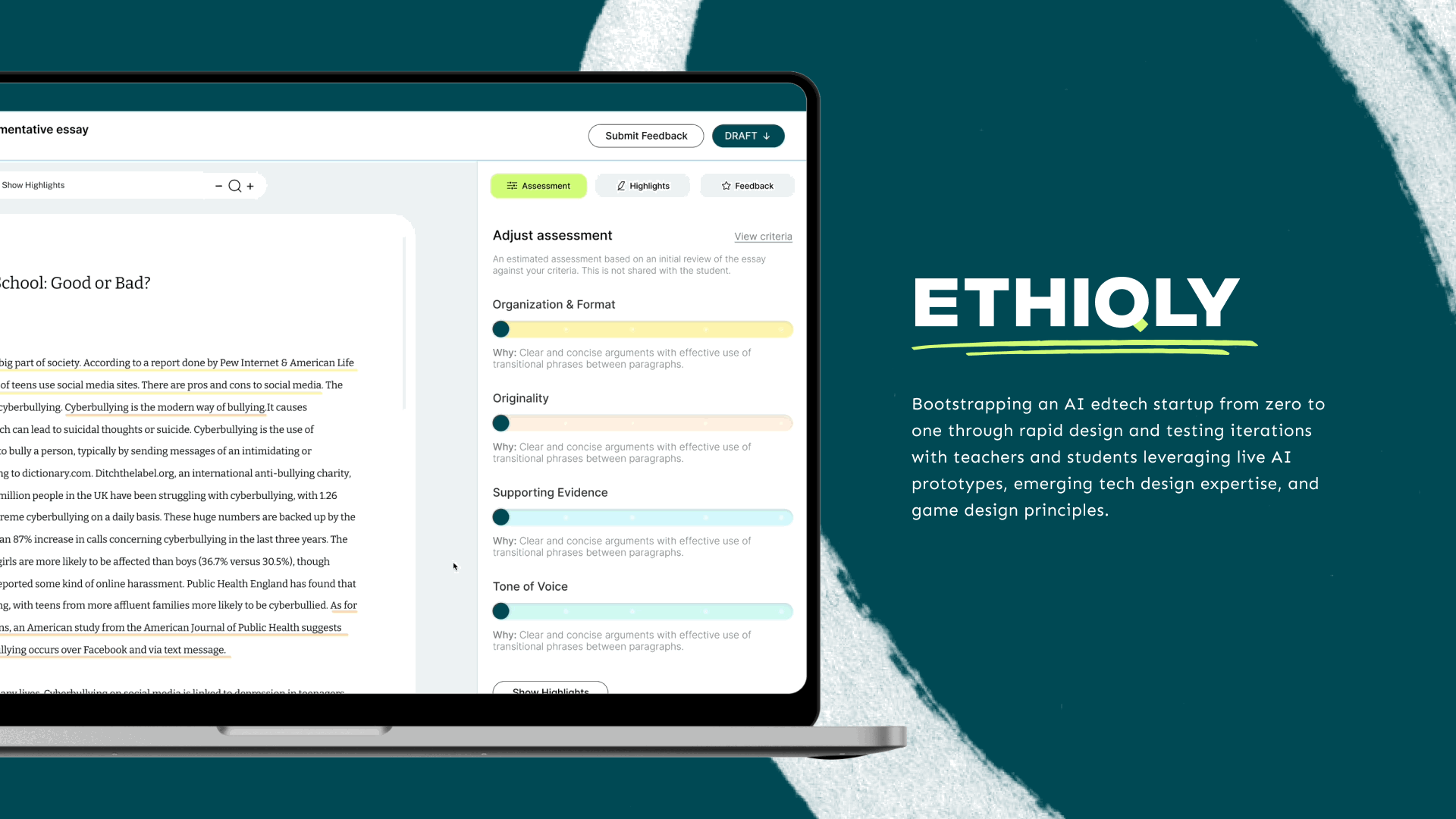
TL;DR
Bootstrapped an AI edtech startup from zero to one, equipping the product team with everything they needed to get to market including ready to pilot AI Minimum Viable Product (MVP), end-to-end UI designs and system flow, design system, branded pitch materials, and a research-driven product roadmap. Employed game design principles to iteratively design, prompt engineer, and playtest live AI prototypes with teachers and students, helping deliver a differentiated offering faster through AI that empowers rather than replaces humans.
What is Ethiqly?
“You can make or break a student’s success on the lack of personal connection …going into 137 Google Docs and typing in information has been the difficult part… [Ethiqly] streamlines the whole process even if you don't have a team of teachers or you don't have time and resources.” — Mark, one of the high school teachers invited into our design process
An AI-powered writing hub and end-to-end assignment companion for teachers and students. In an education system struggling to deal with AI, limited resources, and declining writing skills, Ethiqly scales and deepens the student-teacher connection. Ethiqly provides thoughtful AI tools that empower rather than replace, helping students with variable needs find their own voice and teachers spend less time correcting and more time connecting with personalized assignment reviews.
Project Details
- COMPANY: Ethiqly
- ROLE: Senior Interaction Designer on end-to-end product design, visual design, and research
- THE TEAM: For each phase the core team consisted of: 1x Project Lead, 1x Interaction Designer (me), 1x Data Scientist, 2x Developers + Speciality boosts at key points such as branding and filming. Combined lineup of overflowing awesomeness across different sprints included Diana Tobey, Rachel Young, Max Lackner, Ridima Ramesh, Angela Kochoska, Jenna Fizel, Ethan Klein, James Smalls, Leah Kandel, Nico Gibson, and Rachel del Valle.
- TIMELINE: 3 months (1 month for teacher-facing MVP, 1 month for complete student+teacher MVP, 1 month for feature iteration)
- USERS: K-12 Teachers, Students, and School Administrators
The Challenge
In an education system where AI is seen as a threat and no guidelines exist, how might we help students learn invaluable writing skills and empower teachers to support the unique needs of their classes? Ethiqly co-founders approached IDEO with the seed of an idea to create ethical AI for education before ChatGPT hit the market.
The Twist: Being an early mover in a rapidly evolving space like AI with little existing patterns or guidance is already an intriguing challenge but we went a step farther, designing at the intersection of AI x education where impact is far reaching and ethical concerns rise to the fore. As mainstream AI took off, and sent shockwaves through education systems, we worked closely with the Ethiqly team to deliver a differentiated and market-ready AI edtech offering and iterate on their product vision to center real human and business needs amidst the rapid emergence and development of new technology.

Approach
The IDEO team worked quickly across several phased sprints:
- Initial market research and concepting to identify focus area on K-12 writing education
- 1 month to go from zero to a teacher-ready MVP
- 1 month to design end-to-end experience for students and teachers, working with client development team on product launch while building and testing key functionality.
- 1 month to iterate on key student feature needs, specifically serving students' variable learning needs, for the next product stage.
The team leveraged emerging tech expertise, research-backed educational strategies, and game design principles to create dynamic features that let students and teachers focus their energy on what matters to them and increase engagement in learning. In each phase, we rapidly iterated based upon generative research, including user interviews and co-design with teachers and students to understand their feelings around AI, and evaluative research live testing prototypes and surveying what features were key to a desirable and differentiated product offering schools are actually willing to buy.
Tight sprint timelines forced us to get strategically scrappy so we took on a startup mindset. Designers and developers worked side by side to deliver not only comprehensive product designs for the end-to-end experience but also identify the core value propositions and features to prototype and test for real as working AI experiences pilotable in schools at the same time. The result: Getting Ethiqly to market faster even while equipping them with a long-term product vision and the actionable tools they need to get there such as pitch materials and a research-backed roadmap.
Process

Hands on with AI from Start to Finish for Actionable Designs
CHALLENGE: In the rapidly-evolving world of AI, we knew we needed to hit the ground running to deliver on a tight sprint timeline.
HOW WE TACKLED IT: We prioritized getting hands-on AI from start to finish, conducting desk research on and with AI tools to push their edges and identify opportunities as well as speed up our own workflows (summarize that edtech podcast? Yes please! Now imagine the implications on assignments...).
THE RESULT: Sharing back out findings from the start helped get stakeholders hands-on in understanding the technology involved before we even starting sketching, the potential impact, and also using it themselves in group brainstorms to generate illustrations for their ideas. I led game design x learning workshops to bring in principles of how game designers foster engagement through human agency which helped us center on the role AI should play in Ethiqly.

Making Humans the Heroes to Create Desirable & Differentiated AI
CHALLENGE: AI is an enabler, not an end-goal or selling point. It is also rapidly evolving and multi-functional. How do we deliver a desirable product solving real problems that is also feasible and viable in a marketplace where ChatGPT is free?
HOW WE TACKLED IT: We focused on putting humans first, conducting qualitative research with 40 teachers and students from high school to college, professors to tutors, to hone in on their biggest pain points, underlying needs, and how AI might play a role. Multiple rapid rounds of research, generative early in the process and evaluative to refine our direction, helped us keep students and teacher needs centred at every stage.
THE RESULT: Insights from this research helped us identify where to focus our efforts as it became clear that while AI can automate parts of the process, where and how it shows up is key. Walking through how users felt about AI and real test cases using ChatGPT also helped validate that they have real needs not being addressed by current AI or edtech tooling. For the next stage, our concepts focused on AI as a thought partner to empower, rather than replace, teachers and students.
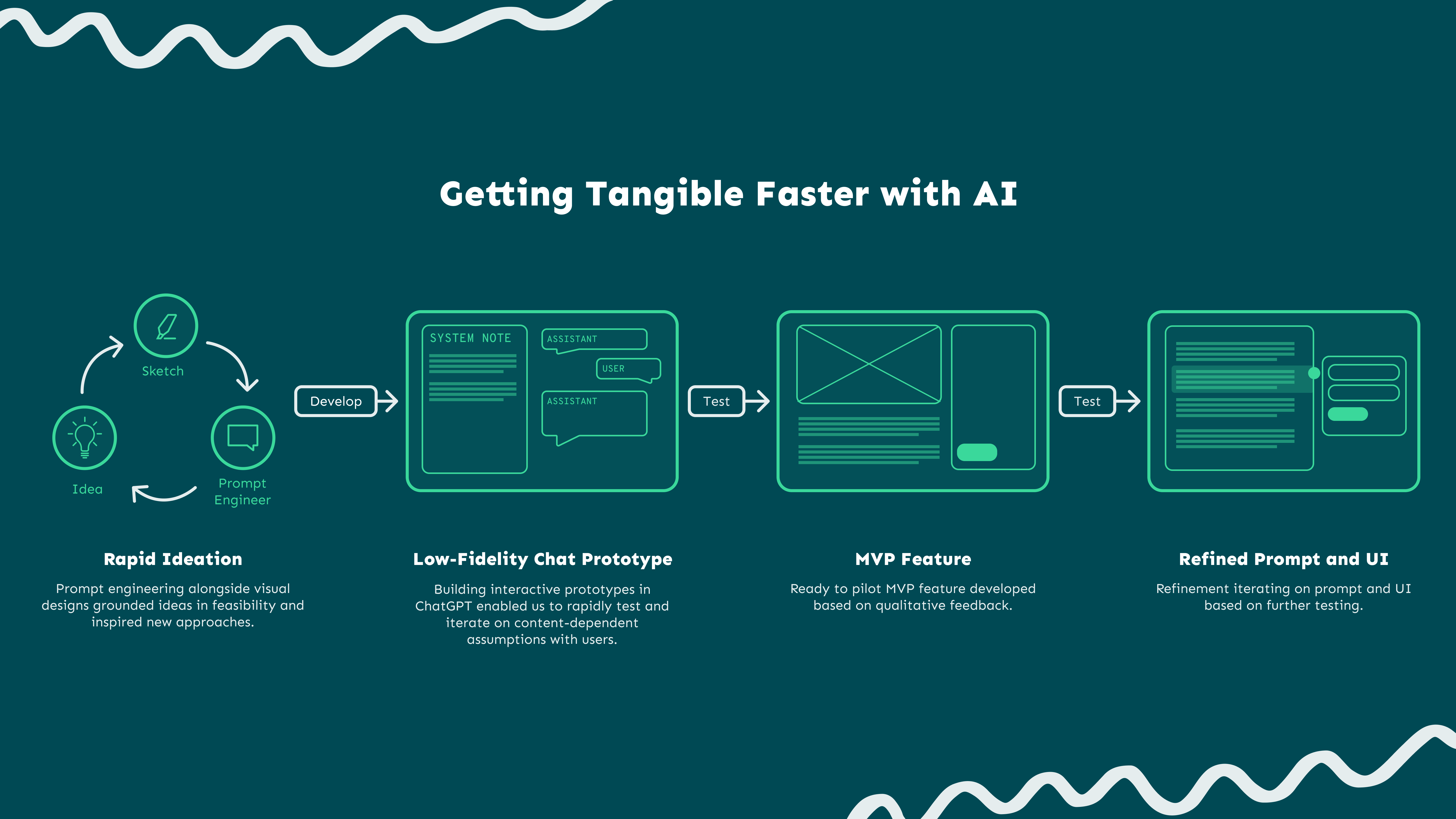
Playtesting AI with Users to Reach MVP Faster
CHALLENGE: With only a few weeks on each phase, time was of the essence and we needed to guage big questions around high value features that were content dependent like assignment reviews or working through a topic with an AI companion.
HOW WE TACKLED IT: The team got hands-on with AI throughout the design process to make sure our ideas were grounded in the possibilities of the tech from the start. Prompt engineering early concepts alongside visual designs helped us refine our ideas as we broke down key feature elements into prompts and quickly gauge how AI might respond in different situations. Unexpected results helped point towards where there may be more or less potential and even inspire new ideas. Armed with both visual prototypes in Figma for higher-level features and working AI prototypes built on top of ChatGPT for content-dependent features, we tested key moments with teachers and students. Functioning, low-fidelity AI prototypes let us play through real scenarios live with users, such as breaking down an assignment they recently struggled with, to get authentic and deep discussion or even refine the prompt in real time.
THE RESULT: This hands-on concept testing helped us rapidly iterate on features and identify the most desirable and differentiated focus areas to prioritize for the product launch. The AI prompts also provided the development team with a jumpstart to begin building out higher-fidelity prototypes for the client team to pilot in schools.
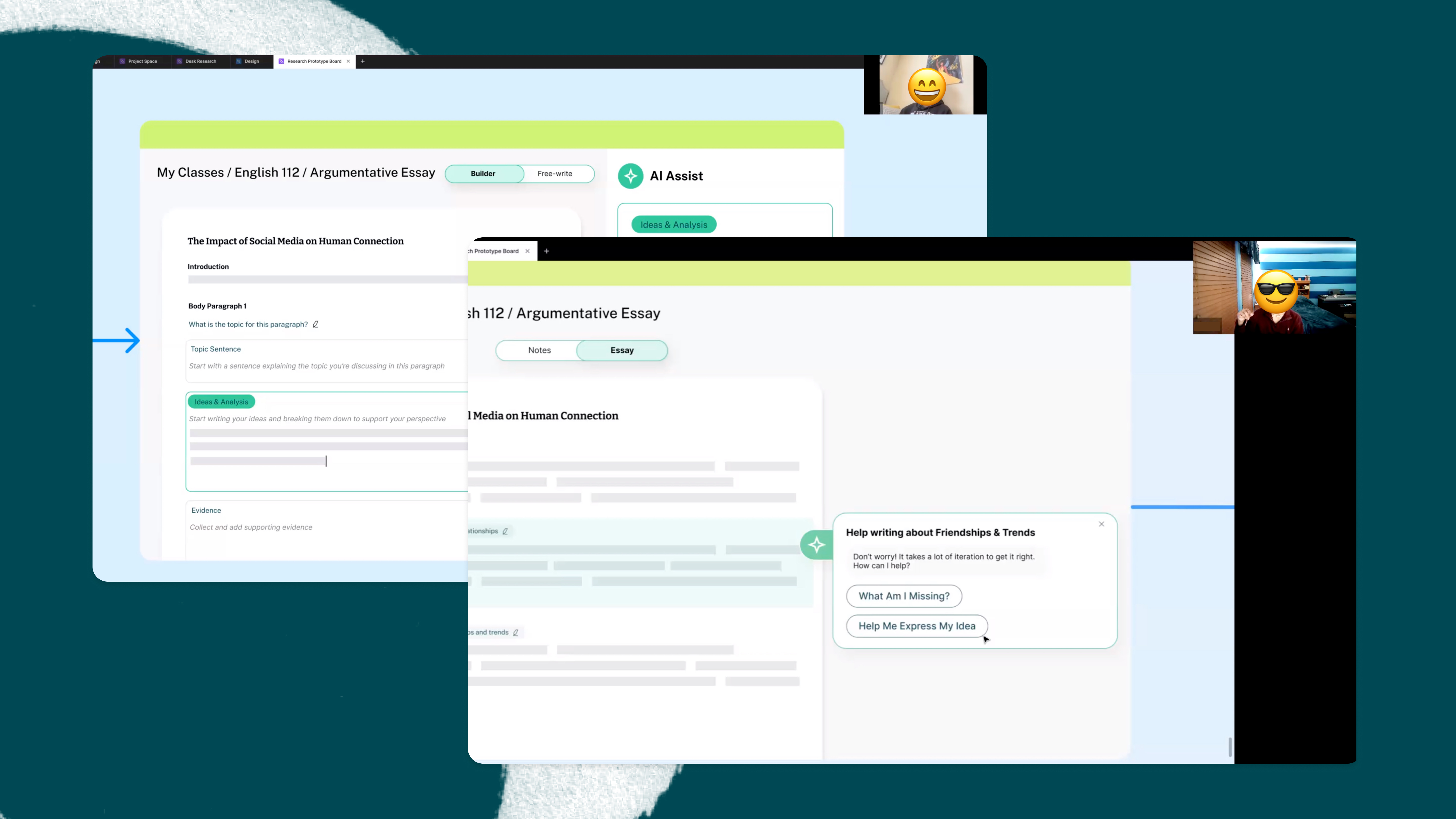
Solution (and Alternatives)
At the start, ideas focused on AI and potential for automating some of the most painful processes in writing education, such as grading large groups of papers. Thanks to rapid rounds of research and testing, we quickly identified that while parts of the writing and teaching process are huge pain points, they are also core to teacher’s role and student’s opportunity for self expression. AI needs to support and empower them in that, not do the work for them.
From early sketches to the final product design, we reframed the problem from how to automate the most painful elements of the process to how to empower teachers and support students to learn better than before. For example, instead of grading papers Ethiqly helps teachers spend less time correcting, more time connecting with their students through personalized AI analysis but the teacher always has the final say. Likewise for students, we heard in research and knew from game design that following their own creative interests is key for engagement so the AI companion does not suggest what to write but instead helps them think through their own ideas when they are stuck.

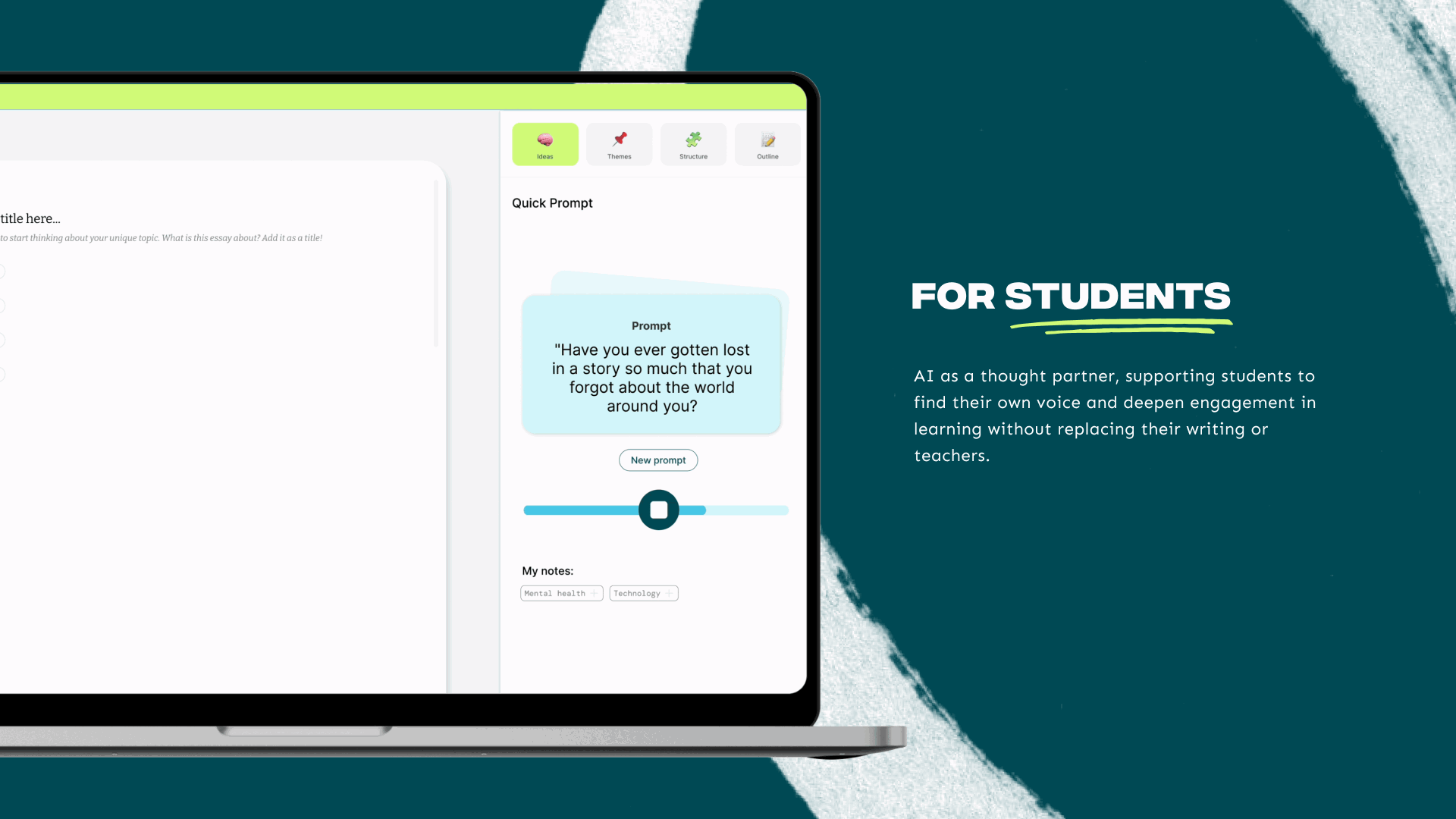
These key principles carry through to the design and finetuning of the AI model. I and the Project Lead collaborated with IDEO AI development experts to think through the higher level system flow and plot what data we would need to make a feature work as well as what might feed into finetuning the model to impact the experience over time. This also meant considering what the AI should NOT do based on educational research and our insights to ensure we empower teachers and engage students while mitigating potential for bias and negatively influencing their education.
The pivot not only made for a more desirable experience for users, it also meant a more viable and differentiated offer on the market that stands apart from ChatGPT skins.
Outcome and Impact
Not only did we get Ethiqly’s product vision from 0 to 1 and deliver product design for the end-to-end MVP, we also helped bootstrap their new venture. We built live AI prototypes ready to pilot in schools based on extensive qualitative research, created comprehensive pitch materials including a prioritized roadmap based on our research insights and designed a new brand and website to prepare for launch. All of our visual designs fed back into a functioning design system I built in Figma which not only helped the IDEO team create consistent designs faster, it also provided a living reference for the client development team to speed up the final build and provide guiding principles for future iterations.

The rest of the juicy details are currently secret
- Visual iterations, alternatives, and why we went with the solution we did
- Tradeoffs, the design system, and collaborating with the development team
- Nitty gritty research synthesis, data, and insights
- Product and MVP considerations
- Final designs, system flows, and test out the live AI prototypes
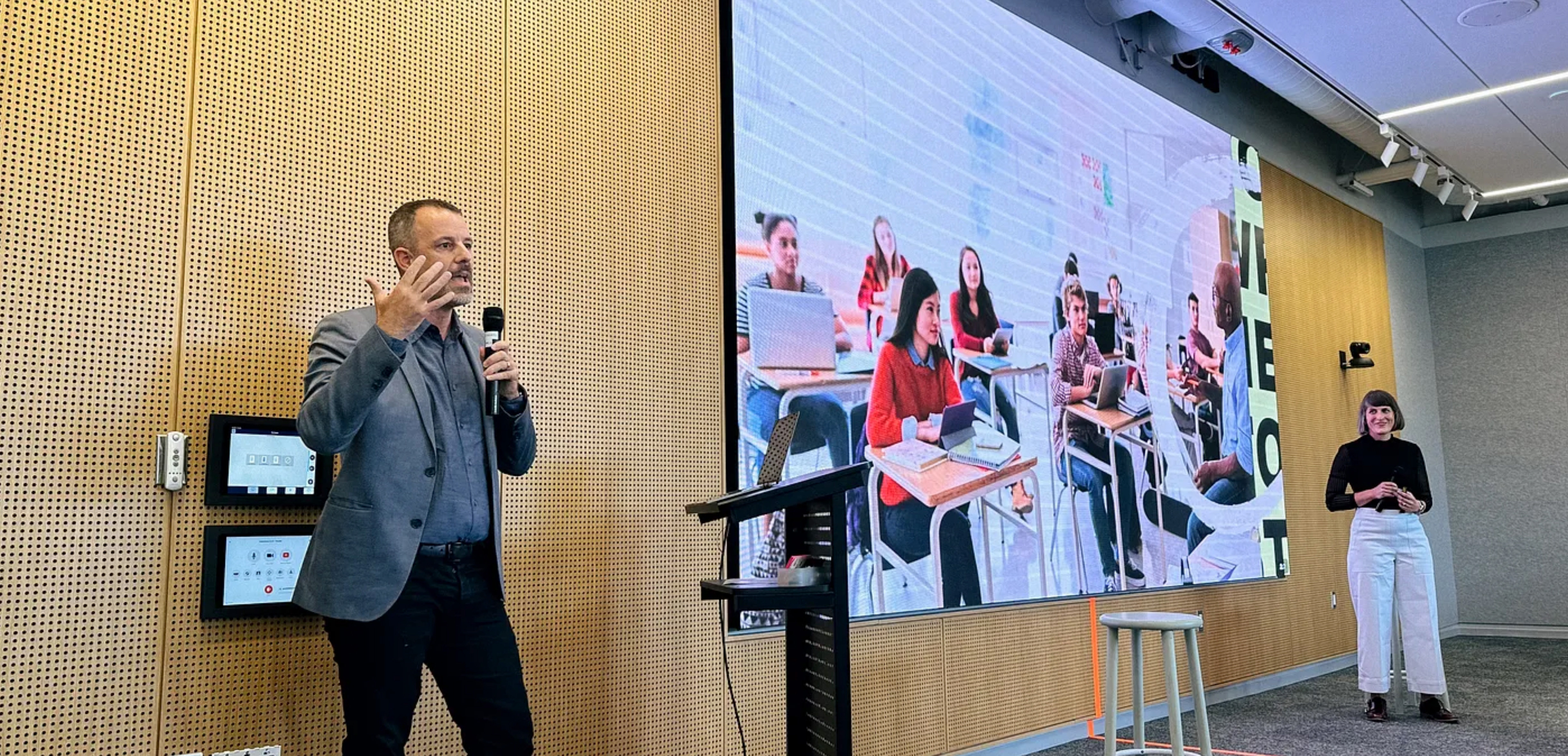
Biggest Takeaways
- Make Humans the Heroes: Automation doesn't necessarily solve problems. Help users spend more time on what is meaningful and less on what detracts from their core role.
- Agency is Key: Teachers and students are the experts in their unique journeys. Especially with students, dynamic features that allowed them to engage when they are stuck and focus when they are in the flow were key to serving variable learning needs and writing styles.
- Get Tangible Faster with AI: On a time-limited sprint, prototyping with AI from the start helped us iterate faster with one eye on what’s possible. Prioritize piloting to test your riskiest assumptions at scale.
- Design for What You Don't See: Even limited on time, we considered what data the model might train on overtime and the potential impact. To mitigate bias, sometimes this meant defining areas where the AI should NOT be finetuned or keeping teachers and students informed of where AI is at work.
- Consistency and Character in AI is No Easy Task: Highschoolers are quick to tell you when your AI companion sounds cringe. The design of conversational features, from the character to the boundaries, is much like game design and an area easy to spend hours and hours designing and refining.